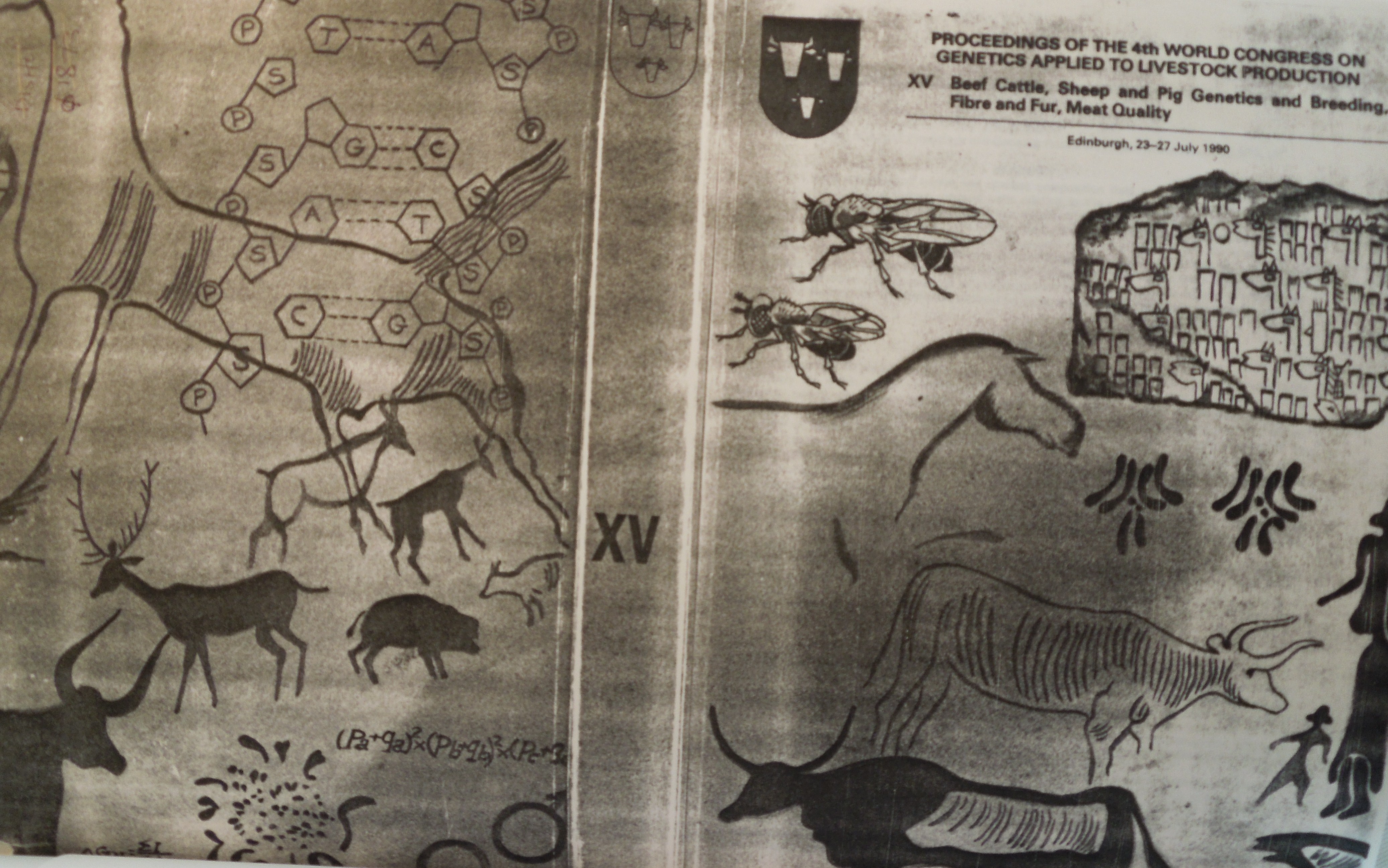 Although the cataloguing of Waddington’s papers is complete, there is still some refoldering and reboxing to be done, to ensure that the material is stored in an archival-quality environment. During this process, one can often come across things one missed the first time around – such as this amusing ‘canon’, with words by Waddington and music by Ralph Alan Dale (an American doctor and Oriental acupuncture expert). (A canon, also sometimes called a ‘round’, is a contrapuntal composition technique which has a melody that is repeated after a certain duration.)
Although the cataloguing of Waddington’s papers is complete, there is still some refoldering and reboxing to be done, to ensure that the material is stored in an archival-quality environment. During this process, one can often come across things one missed the first time around – such as this amusing ‘canon’, with words by Waddington and music by Ralph Alan Dale (an American doctor and Oriental acupuncture expert). (A canon, also sometimes called a ‘round’, is a contrapuntal composition technique which has a melody that is repeated after a certain duration.)
It appears that this highly alliterative piece was composed for a dinner party while Waddington was Einstein Professor at the State University of New York at Buffalo in the early 1970s. I think you would be hard pressed to find a more ‘wordy’ set of lyrics:
It appears impossible to prevent the philoprogenitive propensities of persons peopling the planet with two times its present population of two timers.
The pressure to provide provender and prevent pestilence will be portentous.
People Science perceptive enough to empathize the problems and proposals will profit from a propitious posture to promote their personality potentials.
The querulous who merely question the qualifications of the scientific enquiry after quantity and quality will find that their eternal quest is querying whether their quasi quietude qualifies them for equality quashiokor quod’or the quietus unless these quandum Quixotes quite quit their queasy quibbling and take as quarry their quota of quotidian quiddities.
They will earn their quittance when they can qualify as equating ZBG with a quorum of the quick rather than an unquiet queue of the untimely quenched.
The instructions for performing this piece are almost as complex as the lyrics themselves:
The canon has two parts: the ‘p’ part and the ‘q’ part. The entire piece should first be performed in unison. Then part 1 begins alone. On reaching part II (the ‘q’ part), the second part enters at the beginning (the ‘p’ part). Both parts finish together on ending on the word ‘potentials’, the other ending on the word ‘quenched’. Repeat as many times as desired before ending.
For the more musical among you, it would be interesting to see how this piece sounds when performed – and not least how many times the performers were physically able to ‘repeat…before ending’!



